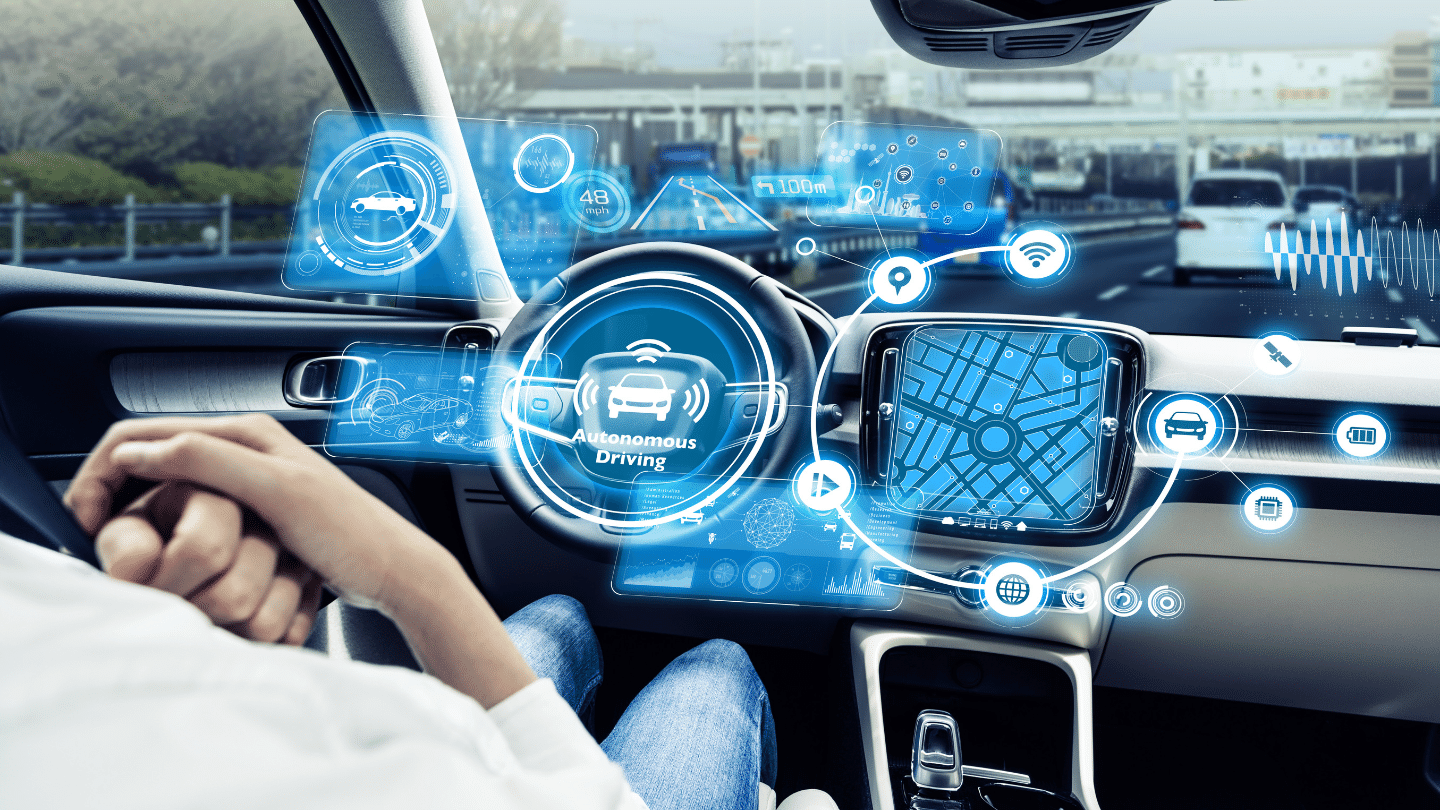
Autonomous vehicles, also known as self-driving cars, are revolutionizing the future of transportation. These vehicles, which rely on technology and artificial intelligence to operate without human intervention, promise to change the way we think about driving, travel, and safety. As autonomous vehicles continue to evolve, it’s important to understand how they work, their potential benefits, and the challenges they may face. This article delves into the concept of autonomous vehicles, the impact they could have on various industries, and their potential to reshape the future of transportation.
Table of Contents
What Are Autonomous Vehicles?
Autonomous vehicles are cars and other transportation systems capable of navigating and operating without the need for a human driver. These vehicles rely on a combination of sensors, cameras, radar, and advanced algorithms to perceive their environment and make decisions in real-time. Autonomous vehicles can detect obstacles, recognize traffic signs, and adjust their speed, making them capable of driving safely without human control. The technology behind these vehicles is often referred to as “self-driving technology dellendirecto.com,” and it has the potential to completely transform transportation systems around the world.
The Technology Behind Autonomous Vehicles
At the core of autonomous vehicles lies sophisticated technology that enables them to navigate the world safely and efficiently. This technology includes sensors such as LIDAR (Light Detection and Ranging), radar, cameras, and GPS, which work together to provide a comprehensive view of the vehicle’s surroundings. These sensors feed data to the vehicle’s computer system, which processes the information and makes decisions based on algorithms and machine learning. The vehicle’s ability to learn from its environment and improve its performance over time is a critical aspect of autonomous vehicles. This technological integration allows autonomous vehicles to operate with high levels of accuracy and reliability, paving the way for a future where human drivers may no longer be needed.
Benefits of Autonomous Vehicles
One of the most significant advantages of autonomous vehicles is their potential to improve road safety. Human error is responsible for the majority of traffic accidents, and autonomous vehicles aim to eliminate this factor. By using sensors and algorithms to detect and respond to potential hazards, autonomous vehicles can react faster and more accurately than human drivers. This can significantly reduce the number of accidents caused by distracted driving, fatigue, and poor decision-making. Additionally, autonomous vehicles can help reduce traffic congestion by optimizing routes and driving patterns, leading to more efficient travel and shorter commute times. Another benefit of autonomous vehicles is their potential to provide mobility solutions for people with disabilities or those unable to drive due to age or health issues.
Impact on the Automotive Industry
The rise of autonomous vehicles is expected to have a profound impact on the automotive industry. Traditional car manufacturers are investing heavily in autonomous vehicle technology, with companies like Tesla, Waymo, and General Motors leading the charge. As autonomous vehicles become more widespread, car manufacturers will need to adapt to new business models and production techniques. Instead of focusing solely on selling cars, manufacturers may shift their focus toward providing autonomous transportation services, such as ride-sharing or fleet management. This shift could result in significant changes to the automotive market, with the potential for new players to enter the industry and disrupt traditional manufacturing processes. Furthermore, autonomous vehicles could lead to the decline of car ownership as people increasingly opt for shared, on-demand transportation services.
Challenges in Developing Autonomous Vehicles
While the potential benefits of autonomous vehicles are clear, there are still several challenges to overcome before these vehicles become a common sight on the roads. One of the biggest challenges is ensuring the safety and reliability of autonomous vehicles. While the technology behind self-driving cars is constantly improving, there have been incidents where autonomous vehicles have failed to respond correctly in certain situations. These incidents have raised concerns about the readiness of autonomous vehicles to operate safely in all driving conditions. Additionally, legal and regulatory frameworks are still being developed to address issues such as liability, insurance, and road infrastructure requirements. As the technology advances, governments and regulatory bodies will need to create guidelines that ensure autonomous vehicles meet safety standards and are integrated smoothly into existing transportation systems.
Ethical and Social Considerations
The development of autonomous vehicles also raises ethical and social questions that must be addressed before these vehicles can become mainstream. One of the most debated topics is the issue of decision-making in emergency situations. For example, if an autonomous vehicle must choose between hitting an obstacle or swerving and potentially causing harm to the passengers or others, how should the vehicle decide? These types of ethical dilemmas are a critical area of research for the developers of autonomous vehicles. Furthermore, the widespread adoption of autonomous vehicles could have significant social implications, such as job displacement for drivers in industries like trucking, taxi services, and delivery. Addressing these issues will require careful consideration and collaboration between industry leaders, policymakers, and society as a whole.
Environmental Impact of Autonomous Vehicles
Autonomous vehicles have the potential to make a positive impact on the environment. Many self-driving cars are being designed to be electric, which means they produce zero emissions during operation. By reducing the number of traditional gasoline-powered vehicles on the road, autonomous vehicles can help lower carbon emissions and contribute to cleaner air. Additionally, autonomous vehicles can improve fuel efficiency by optimizing driving patterns, reducing fuel consumption, and cutting down on unnecessary idling. As the adoption of electric autonomous vehicles increases, the environmental benefits will become even more pronounced, helping to mitigate the effects of climate change and reduce dependence on fossil fuels.
The Future of Autonomous Vehicles
The future of autonomous vehicles looks promising, with continuous advancements in technology, safety, and efficiency. As the technology matures, autonomous vehicles will likely become more integrated into everyday life, offering new modes of transportation for individuals and businesses. Ride-sharing services powered by autonomous vehicles could become the norm, reducing the need for personal car ownership and lowering transportation costs. Furthermore, the rise of autonomous vehicles could lead to the development of smart cities, where transportation systems are seamlessly connected and optimized for efficiency. As these vehicles become more common, they will not only change the way we travel but also the way we design cities and infrastructure.
Legal and Regulatory Framework for Autonomous Vehicles
The adoption of autonomous vehicles will require new legal and regulatory frameworks to ensure they are safe and effective. Governments around the world are already working on creating policies that address issues such as vehicle safety standards, insurance, and liability in the event of accidents. As autonomous vehicles become more prevalent, these regulations will continue to evolve to meet the needs of an increasingly automated transportation system. Ensuring that autonomous vehicles comply with traffic laws, operate safely on public roads, and integrate with existing infrastructure will be essential for their widespread adoption.
Conclusion
Autonomous vehicles are poised to transform the future of transportation, offering a wide range of benefits, including increased safety, efficiency, and sustainability. While there are challenges to overcome, such as safety concerns, regulatory issues, and ethical considerations, the technology behind self-driving cars is advancing rapidly. As autonomous vehicles continue to evolve, they will play an increasingly important role in reshaping transportation systems, reducing environmental impact, and providing new mobility options. With continued innovation and collaboration, autonomous vehicles have the potential to revolutionize the way we travel, making the future of transportation safer, more efficient, and more sustainable.


